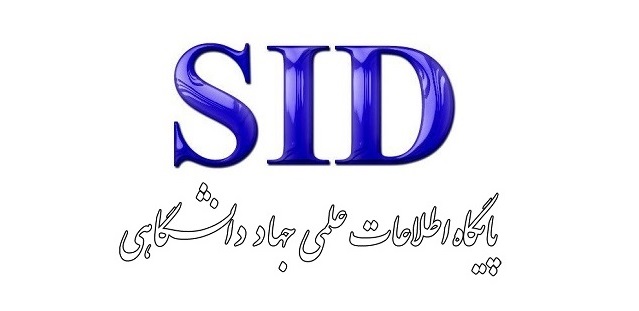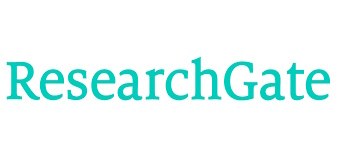The Challenge of Unity Amidst the Plurality of Human Rights Norms with an Emphasis on Climate Change and the Right to Education
Keywords:
Human rights, Environmental rights, Climate change, Right to educationAbstract
Climate change is one of the most critical issues that, in recent years, has garnered significant attention within the fields of law and international relations. This issue has a strong and intricate connection with various legal and political domains. The objective of the present study, conducted using a descriptive-analytical method and based on library research tools, is to explain the status of human rights norms concerning climate change and the right to education. The findings of this research indicate that the existing norms have mostly been adopted in the form of non-binding instruments and soft law documents. Moreover, the breadth of these norms has led to their deep interconnection. The results of the study demonstrate that although climate change is primarily an environmental law issue, it directly and indirectly affects the right to education. This condition reveals that the international human rights legal system is experiencing significant fragmentation and expansion; within this context, a dual tendency toward unity amidst the plurality of human rights norms is evident.
Downloads
References
Beiter, K. (2014). The Protection of the Right to Academic Mobility Under International Human Rights Law. In N. Maadad & M. Tight (Eds.), Academic Mobility. Emerald Group Publishing. https://doi.org/10.1108/S1479-362820140000011019
Beyranvand, F. (2020). The procedure of national courts in confronting with international soft law with emphasis on international humanitarian law. farhang Shenasi.
Beyranvand, F., Sharifi Taraz Koohi, H., & Salami, S. (2019). Configuration and Applying of International Soft Law in the Light of Procedure of the International Court of Justice with an Emphasis on Humanitarian Law. Iran J Med Law, 1(1).
Coplan, K. S., Green, S. D., Fischer Kuh, K., Narula, S., Rábago, K. R., & Valova. (2021). Climate Change Law: An Introduction. Edward Elgar. https://doi.org/10.4337/9781839101304
Dasgupta, S., David, W., Md. Istiak, S., Sunando, B., & Tapas, P. (2020). Coping with Climate Change in the Sundarbans: Lessons from Multidisciplinary Studies. World Bank Group. https://doi.org/10.1596/978-1-4648-1587-4
Dolan, A. (2022). Geography, Global Learning and Climate Justice: Geographical Aspects of Teaching Climate Change. In A. M. Dolan (Ed.), Teaching Climate Change in Primary Schools: An Interdisciplinary Approach. Routledge. https://doi.org/10.4324/9781003112389
Eisenberg, M. A. (2018). Foundational Principles of Contract Law. Oxford University Press. https://doi.org/10.1093/oso/9780199731404.001.0001
Fay, M., Stephane, H., Adrien, V.-S., Julie, R., Ulf, N., & Tom, K. (2015). Decarbonizing Development: Three Steps to a Zero-Carbon Future. World Bank Group. https://doi.org/10.1596/978-1-4648-0479-3
Ghanbari, S., Jafari, M., & Nemati, Z. (2019). The effect of education on environmental knowledge and climate change among forest and non-forest students. Iranian Forest and Poplar Research, 27(1 (75)).
Gilabert, P. (2019). Human Dignity and Human Rights. Oxford University Press. https://doi.org/10.1093/oso/9780198827221.001.0001
Hallegatte, S. (2016). Shock Waves: Managing the Impacts of Climate Change on Poverty. World Bank Group.
Hawken, P. (2018). Drawdown: The Most Comprehensive Plan Ever Proposed to Reverse Global Warming. Penguin Books Limited.
Horgan, K. (2022). A Reflective Approach to Climate Change Education. In A. M. Dolan (Ed.), Teaching Climate Change in Primary Schools: An Interdisciplinary Approach. Routledge. https://doi.org/10.4324/9781003112389-6
Ionesco, D., Daria, M., & François, G. (2016). The Atlas of Environmental Migration. Taylor & Francis. https://doi.org/10.4324/9781315777313
Karami, S., Shobeiri, S. M., & Jafari, M. R. (2016). Presenting a climate change education program in the formal education system based on the education process management in the ISO 10015 standard. Environment, 42(1).
Klabbers, J. (1998). The Concept of Treaty in International Law. Kluwer Law International.
Koonin, S. E. (2024). Unsettled (Updated and Expanded Edition): What Climate Science Tells Us, What It Doesn’t, and Why It Matters. BenBella Books.
Loizidou, E. (2007). Judith Butler: Ethics, Law, Politics. Routledge. https://doi.org/10.4324/9780203945186
May, L., & Brown, J. (2010). Philosophy of Law: Classic and Contemporary Readings. Wiley-Blackwell.
Mechler, R., Laurens, M. B., Thomas, S., Swenja, S., & JoAnne, L.-B. (2019). Loss and Damage from Climate Change: Concepts, Methods and Policy Options. Springer. https://doi.org/10.1007/978-3-319-72026-5
Orero, P., & Carroggio, I. (2018). User Requirements When Designing Learning e-Content: Interaction for All. In E. Kapros & M. Koutsombogera (Eds.), Designing for the User Experience in Learning Systems. Springer. https://doi.org/10.1007/978-3-319-94794-5_6
Pace, J. (2020). The United Nations Commission on Human Rights: ‘a Very Great Enterprise’. Oxford University Press. https://doi.org/10.1093/law/9780198863151.001.0001
Pendergast, D., & Main, K. (2019). Teaching Primary Years: Rethinking curriculum, pedagogy and assessment. Allen and Unwin. https://doi.org/10.4324/9781003117797
Perez, O. (2017). Fuzzy law: a theory of quasi-legality. In H. P. Glenn (Ed.), Law and the New Logics. Cambridge University Press. https://doi.org/10.1017/9781316227329.013
Pineschi, L. (2015). General Principles of Law - The Role of the Judiciary. Springer. https://doi.org/10.1007/978-3-319-19180-5
Praag, L. V., Loubna, O.-S., Elodie, H., & Caroline, Z. (2021). Migration and Environmental Change in Morocco: In search for Linkages Between Migration Aspirations and (Perceived) Environmental Changes. Springer. https://doi.org/10.1007/978-3-030-61390-7
Redondo, M. C. (2013). Reasons for Action and the Law. Springer.
Robertson, M. (2014). Stanley Fish on Philosophy, Politics and Law: How Fish Works. Cambridge University Press. https://doi.org/10.1017/CBO9781139871358
Santos, B. d. S. (2020). Toward a New Legal Common Sense: Law, Globalization, and Emancipation. Cambridge University Press. https://doi.org/10.1017/9781316662427
Sharpe, R. (2020). How Judges Decide. In R. Assy & A. Higgins (Eds.), Principles, Procedure, and Justice: Essays in Honor of Adrian Zuckerman. Oxford University Press. https://doi.org/10.1093/oso/9780198850410.003.0005
Siltala, R. (2011). Law, Truth, and Reason: A Treatise on Legal Argumentation. Springer. https://doi.org/10.1007/978-94-007-1872-2
Weinrib, E. (2010). Legal Formalism. In D. Patterson (Ed.), A Companion to Philosophy of Law and Legal Theory. Wiley Blackwell. https://doi.org/10.1002/9781444320114.ch20
Worth, K. (2021). Miseducation: How Climate Change is Taught in America. Columbia Global Reports. https://doi.org/10.2307/j.ctv2dzzqvp
Downloads
Published
Submitted
Revised
Accepted
Issue
Section
License
Copyright (c) 2025 زینب بالیخانی, زهرا ضیافتی صباغ, حاتم صادقی زیازی (نویسنده)

This work is licensed under a Creative Commons Attribution-NonCommercial 4.0 International License.










